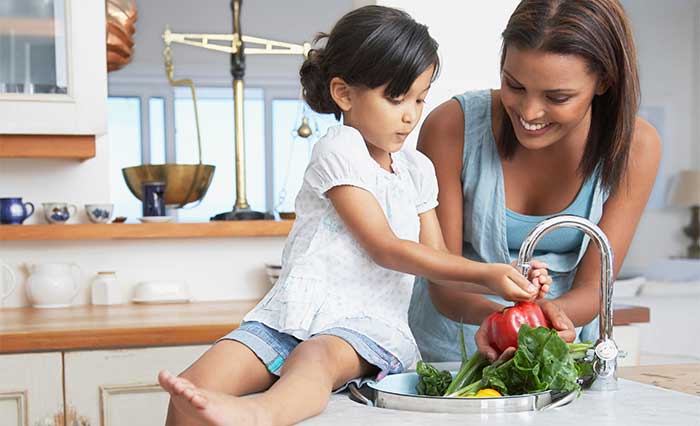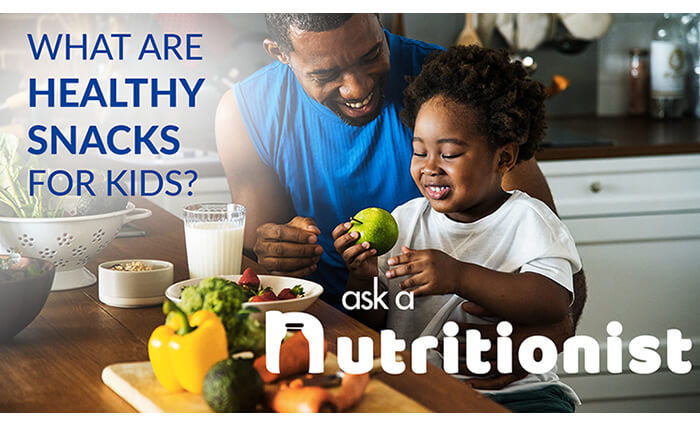By:

How Is Healthy Eating Learned?
Eating is learned behavior. Children may need to see, feel, smell, hear, and/or taste a new food 10 to 15 times before they eat and enjoy the food. Having a positive relationship with food and eating a wide variety of foods as an adult is the outcome of this positive eating journey.
Exposure, Patience and Time
To establish positive eating experiences, expose children to a wide variety of foods that may or may not be new to them; do this often and with positivity. Pairing new foods with familiar foods increases the likelihood that children will try and enjoy new foods. Trying new foods can make some children nervous or fearful, and this neophobia (fear of something new) may require more time and patience when learning to eat new foods. Picky eating, or being selective and rejecting a new food at first exposure, is a normal developmental stage. Children need many and varied exposures to food throughout their development before they willingly eat it. Keep the language around food and the food environment a positive one. This may mitigate and help alleviate resistance and increase the likelihood that children accept a new food.
Positivity and Praise
Additionally, trying new things, like food, with friends and role models may increase the likelihood that children will try and enjoy them. However, it is okay for children to opt out of participating in this experience. For children who are vocalizing their fear or uncertainty, think of ways to include them by giving them some responsibility. For example, children can help select foods when shopping, help prepare food, set the table or help with cleanup. Use specific praise when children participate, like, “Thank you for helping me set the table,” or “Thank you for being brave and trying kiwi today”. These actions support children’s social and emotional health. Positive and specific praise is encouraging, acknowledges their effort and keeps the experience positive for all. Supporting children through new experiences, like tasting new foods, supports the whole child in emotional and social development.
What Can You Do to Support Healthy Eating?
Parents and caregivers are children’s first teachers, so modeling healthy behaviors is important and impactful.
Helping children learn to try and love new foods helps them develop into adults that enjoy eating a wide variety of foods and care for their bodies. Find more resources on healthy eating at HealthyEating.org/FoodTasting.
Sharing positive cooking + eating experiences with children will inspire healthy eating habits + contribute to good health in childhood + adulthood.

Watch the latest episode of Ask A Nutritionist and learn what are healthy snacks for children.

Subscribe to our blog to stay up to date on the latest news, products, and more.